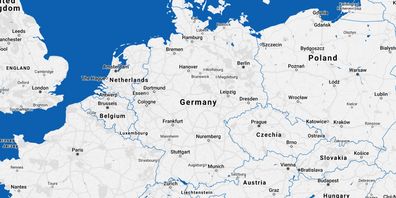
Electrical / Information Engineering, Department
Fakultät für Elektrotechnik und Informationstechnik
Technische Universität Chemnitz
Reichenhainer Straße 70
D-09126 Chemnitz
Telephone: +49 371 531-24000
https://www.tu-chemnitz.de
TU Chemnitz
Department on the internet
Degree courses with details
- Biomedical Engineering (B.Sc.)
- Electrical Engineering and Information Technology (B.Sc.)
- Electric Mobility (B.Sc.)
- Biomedical Engineering (M.Sc.)
- Renewable Energy Systems (M.Sc.)
- Electric Mobility (M.Sc.)
- Embedded Systems (M.Sc.)
- Micro and Nano Systems (M.Sc.)
- Information and Communication Systems (M.Sc.)
- Energy and Automation Systems (M.Sc.)
- Microsystems and Microelectronics (M.Sc.)

Map material from the free geographic information system OpenStreetMap. The DAAD explicitly does not adopt the information provided there (names, boundaries, etc.) in every case. No guarantee is given for the accuracy of this information.
Legend:
- Department
Basic information
- Total number of students at the department
1,060
- Number of master degree students (w/o teacher qualification)
720
- Percentage of teaching by practitioners
5.2%
- Percentage of teaching by practitioners, master's
5.2%
Support during the study entry phase
- Total score for support in the study entry phase
10/14 points
Job market- and career-orientation
- Bachelor theses in cooperation with work environment
100.0%
- Master theses in cooperation with work environment
100.0%
Research
- Publications per academic
3.7
- Citations per publication
3.8
- Third party funds per academic
153,500 €
- Doctorates per professor
1.2
Students' assessments on undergraduate, presence-learning-courses
- Teacher support
- Support in studies
- Courses offered
- Study organisation
- Exam organisation
- Digital teaching elements
- Research orientation
- Offers for career orientation
- Rooms
- Library
- IT-infrastructure
- Laboratories
- Overall study situation
- Return rate of the questionnaires
29
Students' assessments on consecutive master's degree courses
- Teacher support
return rate too low
- Support in studies
return rate too low
- Digital teaching elements
return rate too low
- Courses offered
return rate too low
- Study organisation
return rate too low
- Transition to Master's studies
return rate too low
- Research orientation
return rate too low
- Overall study situation
return rate too low
- Return rate of the questionnaires
no data
Further information provided by the department
Special features regarding teaching
Special features regarding the international orientation
Special features regarding the equipment
Special features regarding research activities
Support for founders
Other special features
Further information on research activities
Further information about study entry phase
Information on access restrictions
Website of the Student Council
online-application
Legend
Groups
green
yellow
red
Acronyms
(S) = Students' judgements
(F) = Facts
(P) = Professors' judgements
Units
Value in percent
Value in points
Euro
Thousand Euro